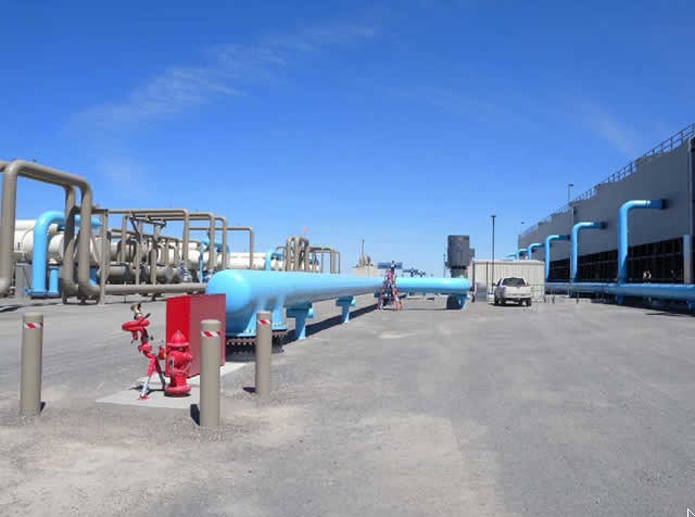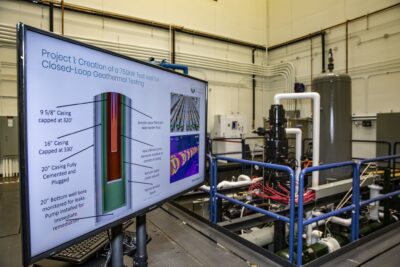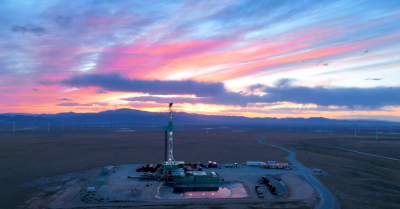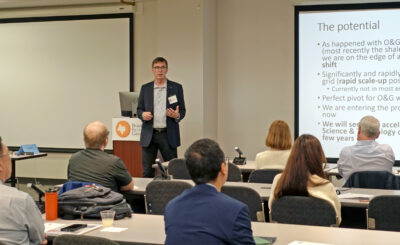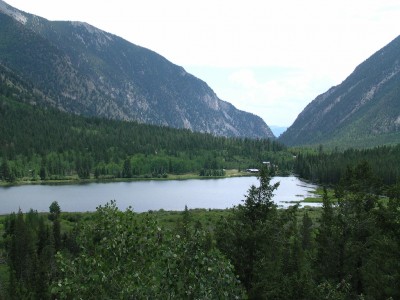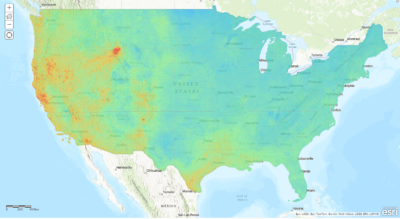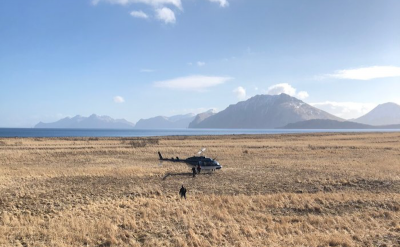Nevada Geothermal Power provides update on activities
Nevada Geothermal Power provides an update on its activities and the Faulkner 1 plant at Blue Mountain, Nevada, which is now operating at 38MW net and plans to increase to 45MW net.
On the output of its Faulkner 1 Geothermal Plant at Blue Mountain, Nevada, Nevada Geothermal says it is pleased with the performance of the plant since the re-design and installation of the new electrical cable system.
In the release by the company it is said that, “in April and May 2010, the first full months of operation since electrical repairs were completed, the average net plant output was 38 MW, plant availability was 99%, and gross revenue was US$4.2 million (June performance is similar). Operations during the period have proceeded without incident.
The Faulkner 1 plant is currently operating at 38 MW (net) due to its current selection of the supply amount under the Power Purchase Agreement with Nevada Energy (the “PPA”). The Company intends to seek an increase of the supply amount in the fourth quarter of this year. Factors which will determine the amount of the supply amount increase include connection of production well 44-14, further optimization of injection, and available cooling water supplies.
The Company intends to increase production from the Faulkner 1 plant to 45 MW (net) through an optimization program during the remainder of 2010. Funds necessary for this program will be made available from a drilling reserve fund established as part of the John Hancock financing (see below).
Development Plan for Blue Mountain: The Company will conduct further confirmation drilling to establish additional resources for production and to develop new areas for injection in order to enhance overall reservoir performance.
The Faulkner 1 plant currently uses injection wells completed into a deeper, hotter western segment of the Blue Mountain reservoir. These injection wells communicate closely through fractures with the existing production well field and have the potential to cause temperature decline over the long term. As new injection wells are drilled at targeted sites on the property, such western injection will be diminished, thereby allowing for sustained higher production at the Faulkner 1 plant and for additional resource to be developed for expansion.
The Company’s development plan incorporates establishing new injection areas and ultimately the conversion of selected existing injection wells into production wells for a Phase II plant. Existing western injection wells (61-22, 58-11, 57-15 and 55-15) are connected to the central Faulkner 1 plant by insulated pipelines and can be readily converted into production for the Phase II plant. In the event that the Company’s plan to develop new injection wells is successful, the re-configured well field would result in an immediate increase in production capacity and new production well locations which will allow for expansion of the existing production core. The Phase II plant has a planned capacity of 25 MW (net) bringing the total possible production capability from the field to approximately 70 MW (net).
Senior Debt Financing: The conditional Department of Energy (“DOE”) loan guarantee approval, received on June 15, 2010, is a major milestone and the Company expects to complete final documentation and approvals to close the US$98.5 million financing with John Hancock in the near future. The blended interest rate, based upon the long term US Treasury rate and determined at the time of closing, would be approximately 5% based on today’s US Treasury rates. Loan proceeds will be used to partially pay down the existing TCW mezzanine debt, to fund an interest reserve account (approximately $5.5 million), a drilling reserve account (approximately $8.4 million), and other costs.
GeothermEx Inc., an independent consultant, has performed reservoir modeling for the Blue Mountain geothermal field to support the due diligence work for the senior debt financing. The modeling considered several scenarios including a base-case of the existing production and injection wells at Faulkner 1 with no further drilling through the 20-year term of the loan. The base-case model confirms that the Company can meet its PPA commitments without further optimization drilling by producing power in the range of 36 MW in the short term and allowing power production to decline at an estimated rate of 2.5% per annum over the 20 year contract period. The Company anticipates that its active and ongoing program of reservoir optimization will sustain Faulkner 1 production at higher levels than modeled in the base-case. The Company intends to further develop injection capacity, (as described above) using funds provided in the John Hancock drilling reserve fund to exploit the full potential of the wells that have already been drilled, thus maximizing income and paying down debt as fast as possible.
The Company believes that the pace of optimization of Faulkner 1 compares favourably to other geothermal production sites.
Project Eligibility for ITC Grants: The Company is also turning its attention to performing work at the Crump Geyser and Pumpernickel Projects prior to the end of 2010, in order to have them qualified for 30% ITC/Tax Grants in 2013.
At Pumpernickel a large amount of detailed work has been completed over the past five (5) years to define production drill targets. Several hot springs with temperatures up to 185° F (85°C) issue from the Pumpernickel fault scarp along the west side of the valley. Seismic surveys provide images of the Pumpernickel fault and several parallel faults in the valley extending to great depths. Geochemistry indicates that the reservoir temperature could be greater than 330°F (165°C). A production test well drilled in 1974 intersected the upper reaches of the geothermal system in the Pumpernickel fault at a depth of 3000 feet. The Company has completed all permitting for three deep production test wells designed to intersect the target reservoir at around 5000 feet.
At Crump Geyser, many hot springs occur along the west side of the Warner Valley pull-apart rift structure. Hot spring chemistry indicates a reservoir temperature of approximately 300°F (150°C). In 2010, magnetic and gravity surveys have been completed to augment surface mapping and define structure. Strong subsurface conductors that have been outlined in electrical resistivity surveys are believed to reflect the geothermal reservoir within the rift underlying the valley. Ten (10) temperature gradient holes are permitted and will be drilled under a matching fund program with DOE (US$1.7 million grant) and permits for two (2) reservoir confirmation wells and three (3) production test wells are pending.
Further work is planned at Black Warrior with DOE funding and at the newly acquired Edna Project.”
Source: Company release via Financial Post
